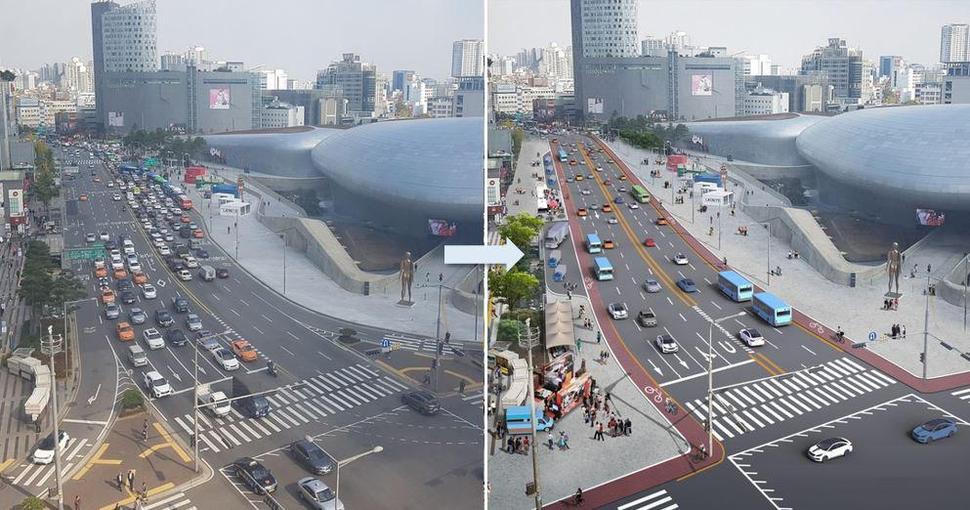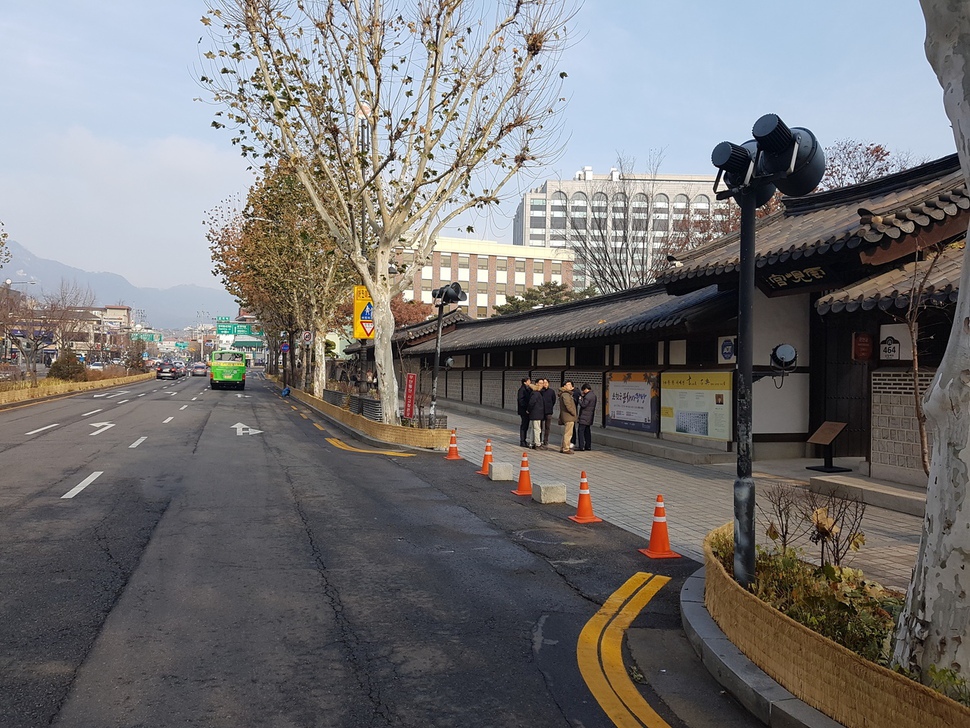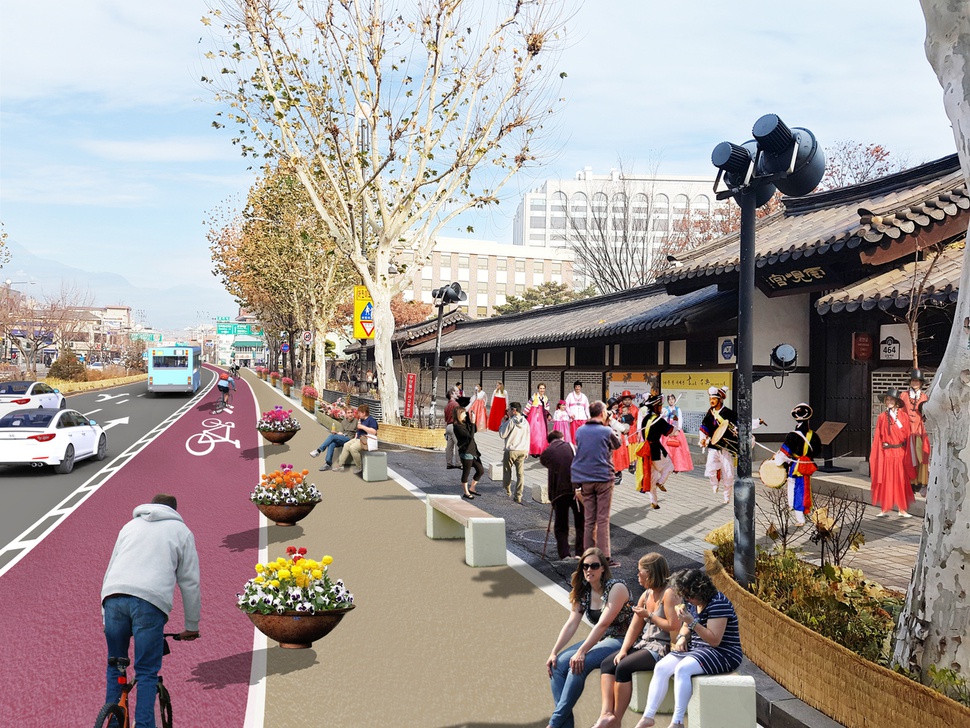 |
|
A bird’s-eye view of an artist’s rendering showing the road next to the Dongdaemun Plaza after it has been narrowed from its current eight lane configuration (left) to six. (provided by Seoul City)
|
Measures are to be taken as a part of a policy to promote environmentally friendly transportation
All roads within Seoul’s four major gates are to be narrowed to between four to six total lanes, starting with Sejong Road, Eulji Road, and Toegye Road this year. But the city of Seoul has left other policy measures to drastically improve transportation and the environment within the gates as mid- to long-term projects, including implementation of congestion tolls and even- and odd-numbered vehicle days. The city announced on Mar. 5 that it had submitted a draft of “special comprehensive green transportation promotion zone measures” to the Ministry of Land, Infrastructure and Transport (MOLIT). The green transportation promotion zone is a policy effort to promote environmentally friendly transportation. In Mar. 2017, 16.7 square kilometers of Seoul within the four main gates (Hanyang Fortress Walls) were designated by MOLIT as a green transportation promotion zone. The city plans to go ahead with its measures once they are approved by the ministry. As part of the measures, the city is to reduce all roads to within the four gates to a total of four to six lanes. A maximum of six lanes will be allowed for roads with large amounts of bus traffic or dedicated bus lanes, while other roads will be restricted to up to four lanes. Additional lanes from the reduced roads are to be used as bicycle and pedestrian paths or for work-related temporary parking for loading and unloading. In 2017, the city created a bike lane with the building of a central bus lane on Jongno Road. The project is set to begin this year with Sejong Road, Eulji Road, and Toegye Road. The reduction of the 1,500-meter stretch of Sejong Road between Gwanghwamun Junction and Seoul Station, which currently reaches ten lanes at its widest, is to be tied to the restructuring of Gwanghwamun Square, while the efforts for Eulji Road (3,700 meters from Seoul City Hall to Dongdaemun History and Culture Park, maximum of eight lanes) and Toegye Road (1,200 meters from Taegye Road No. 1 to 5, maximum of eight lanes) are to be respectively linked to renewal of the Seun Sangga shopping area and Namsan’s Yejang Jarak neighborhood. The Sejong Road project is seen as the most central in terms of symbolism and traffic volumes, with the approach to restructuring Gwanghwamun Square poised to be a key factor. The current plan for the square, which involves building roads underground while using the entire ground-level space for the square, has faced considerable opposition on cost-related and environmental grounds. The project will also result in slower traffic speeds within the four gates. Speed limits are to be lowered to 50 km/hr for main roads and 30 km/hr for inside roads, with additional safety infrastructure installed to reduce speeds.
 |
|
The road next to Unhyeon Palace as it currently appears. (provided by Seoul City)
|
 |
|
An artist’s rendering shows the road next to Unhyeon Palace after its projected reconfiguration, which includes adding a bike lane. (provided by Seoul City)
|







